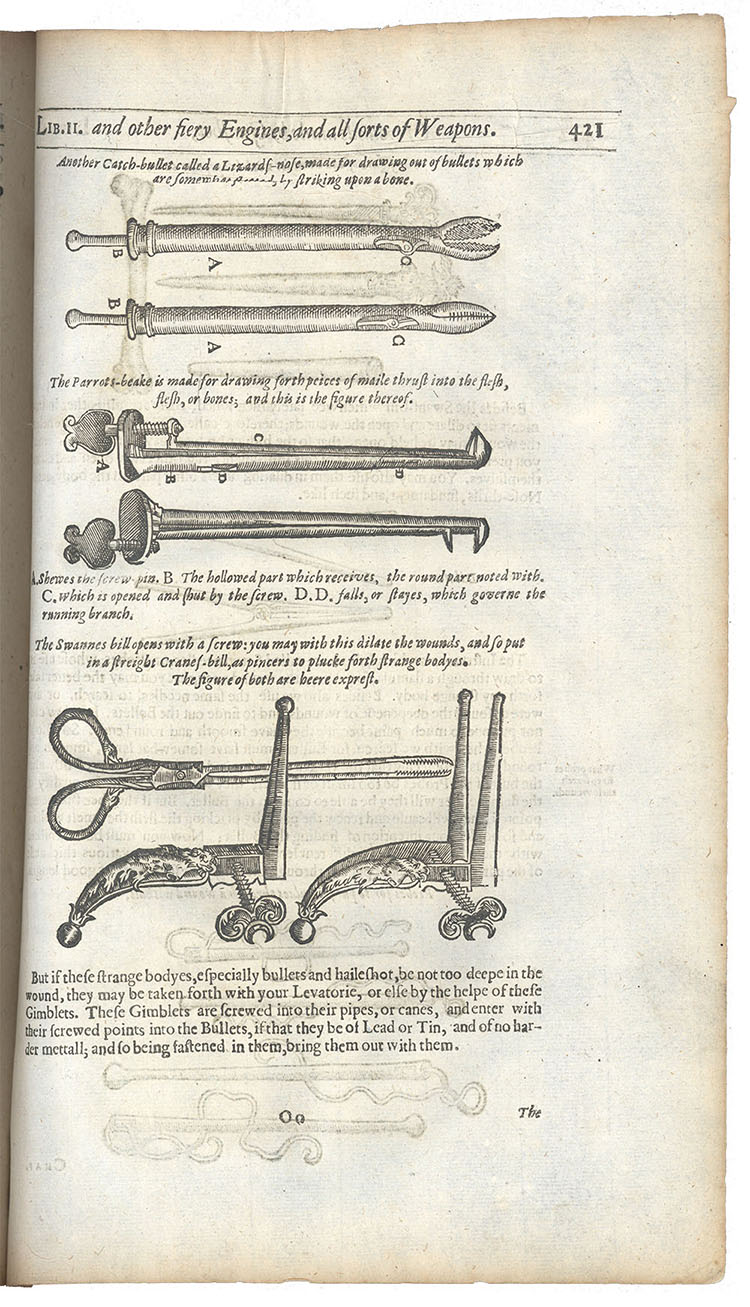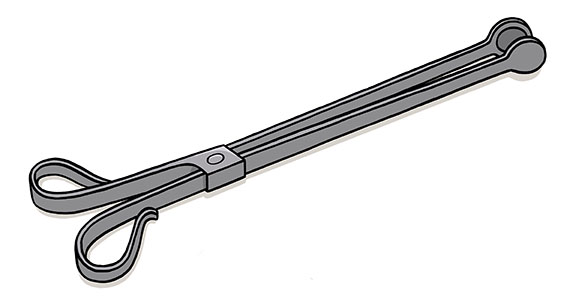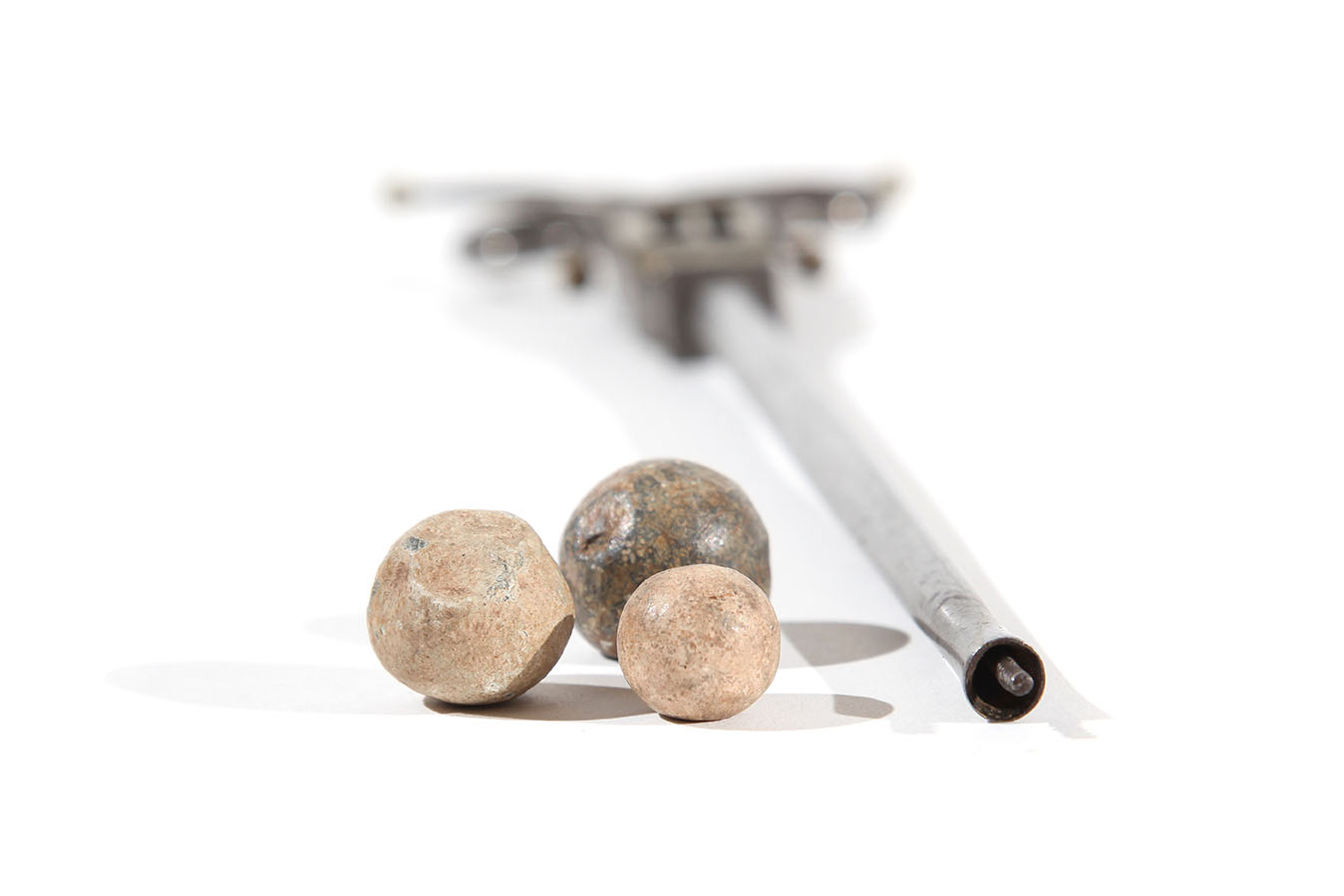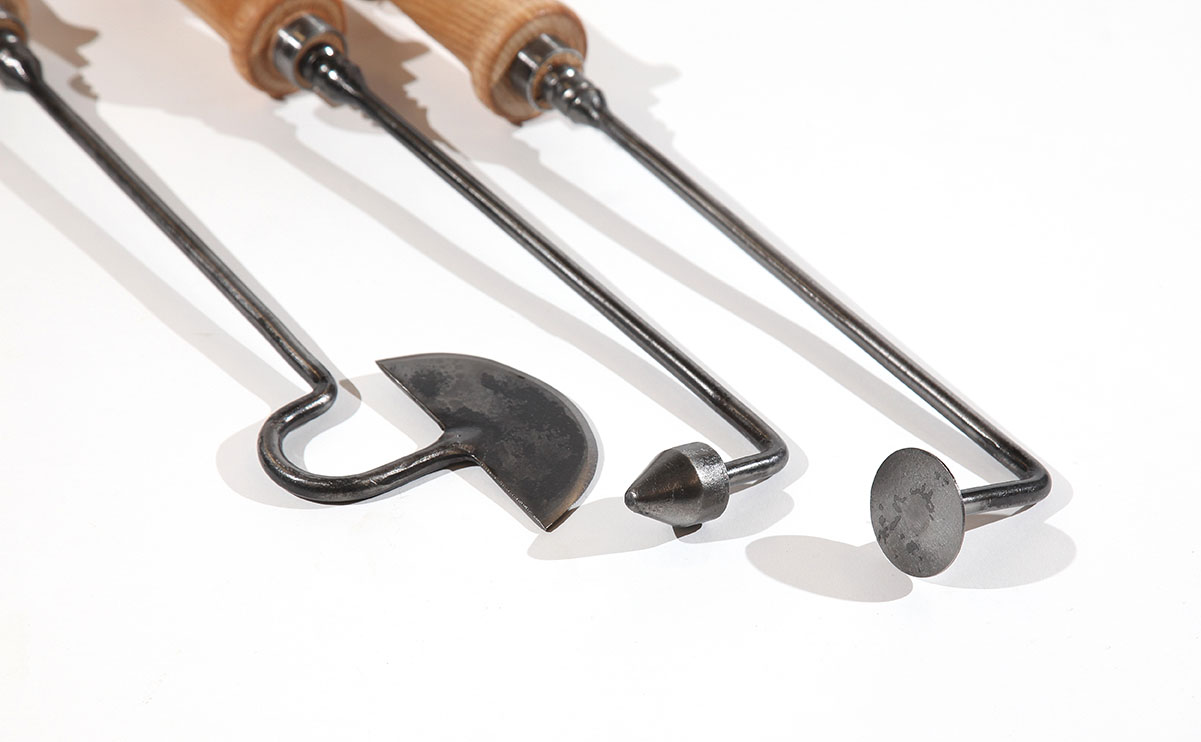Soldiers fighting in the Civil Wars received horrific injuries. Some of the most common injuries were gunshot wounds (caused by muskets, carbines and pistols), slash wounds (caused by swords and knives) and puncture wounds (caused by pikes).
Military surgeons, known as ‘barber surgeons’, had to extract bullets, stop bleeding, carry out amputations and close wounds.
Extracting bullets
With so many muskets fired on the battlefield, gunshot wounds were a very common injury suffered by soldiers in the British Civil Wars. Battlefield surgeons had to act quickly, using a bullet extractor to remove the bullet and then sealing the wound by burning it with a red-hot iron.
Activity
- What surgical instruments did barber surgeons use to extract musket balls?
Stopping bleeding
Cauterising irons were used to stop bleeding. They would be heated until they were red hot and then applied to the skin to burn and seal areas of bleeding. This was incredibly painful as there were no anaesthetics to numb the pain.
Activity
- What surgical instruments did barber surgeons use to stop bleeding?
Amputation
If a limb became infected, it would have to be amputated. The surgeon would use an amputation knife to cut through flesh and muscle, exposing the bone. The curved knife ensured a quick and clean cut. Speed was vital, as the procedure was incredibly painful.
Once the bone had been exposed, the surgeon’s assistant would draw back the flesh of the affected limb and the surgeon would use a bone saw to cut all the way through. An experienced surgeon could complete an amputation in as little as three minutes. Some surgeons kept a spare bone saw on hand in case the first one broke.
Activity
- What surgical instruments did barber surgeons use to amputate fingers?
- What surgical instruments did barber surgeons use to amputate limbs?
Closing wounds
Activity
- What surgical instruments did barber surgeons use to close wounds?






